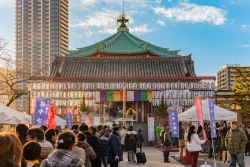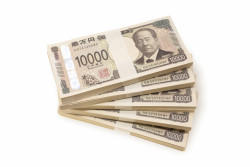
Originally published on metropolis.co.jp on September 2008
Most people, when they first hear of Ivan Ramen, ask questions like, “What the hell does a foreigner know about making ramen?” But the skeptics come, they eat, and are converted, because it turns out that Ivan Orkin, the owner/chef, knows a hell of a lot about ramen.
Orkin opened his restaurant just over a year ago, and his rise to the top of the ramen world has been meteoric. He’s been featured in the Japanese media more times than he can count, and his restaurant was voted the best new ramen shop of 2007 by a Tokyo food magazine. He has also been interviewed by National Public Radio, The International Herald Tribune/Asahi Shimbun, The Wall Street Journal and CBS news.
Why all the fuss? A ramen shop owned and operated by a guy from Syosset, New York, certainly is unique in Japan, but that fact alone doesn’t draw crowds. What really counts is that the ramen is so good.
Orkin has been fitting the pieces of his success together ever since he tasted his first bowl of ramen in Japan 20 years ago. A classically trained chef, he worked in some of Manhattan’s finest eateries after graduating from the Culinary Institute of America, including the renowned French restaurant Lutèce and Bobby Flay’s Mesa Grill.
Orkin makes everything by hand: the noodles, the soups, the pork chashu, even the lemon ice cream for dessert. The noodles alone took many weeks of trial and error before he obtained the thin, al dente texture and taste he was striving for.
Bestsellers include the Shoyu Everything Ramen and the Shio Everything Ramen (each ¥1,000). Besides the superb noodles, the bowl includes a lusciously soft-boiled hanjuku egg, slices of tender chashu, a menma (bamboo shoot), and shavings of sweet onion crowning the deeply nuanced soup.
An interesting alternative to the ramen is the Chashu Spicy Red Chili Men (¥950), a soupless dish with noodles dressed in a flavorful mix of oils, broth and a complex blend of roasted chipotle pepper and garlic.
Side dishes like roasted tomato meshi (¥300)—a small bowl of rice topped with a thick slice of roasted tomato, savory with garlic oil and sliced green onions—round out the menu. There is even an “appetizer” comprised of three tidbits, such as roasted tomato, a slice of roasted chashu, or a hanjuku egg (¥500).
Orkin loves to feed people, and it shows in the care that he devotes to each aspect of his ramen and in the personal attention he pays to the customers. On a recent rainy Saturday afternoon, 40 hungry souls braved the cold rain to line up in the covered shotengai which houses his shop. No one minded the 30-minute wait for one of the ten seats at his counter.
“If people don’t get to stand in line, they feel they miss part of the ramen experience,” said Orkin with a grin.









